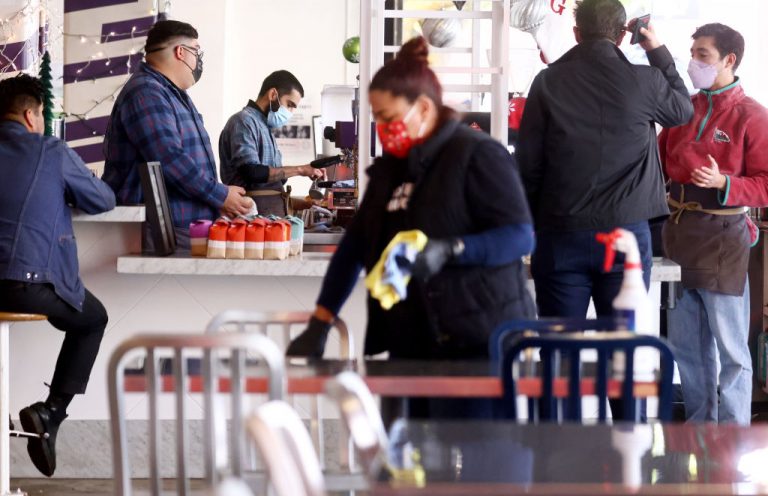Reports of Omicron Coronavirus Disease 2019 (COVID-19) cases are beginning to accumulate in the U.S., according to an analysis published by the Centers for Disease Control and Prevention (CDC) on Dec. 10.
The SARS-CoV-2 variant B.1.1.529 (Omicron) was first reported to the World Health Organization (WHO) by South Africa on Nov. 24, and was classified as a “variant of concern” due to mutations that “might increase transmissibility, confer resistance to therapeutics, or partially escape infection- or vaccine-induced immunity.”
Fully vaccinated comprise 79 percent of cases
The first case of Omicron was reported by the U.S. on Dec. 1, and between Dec. 1 and Dec. 8, at least one Omicron case was reported in 22 U.S. states. “National SARS-CoV-2 Strain Surveillance” was initiated on Nov. 28, which uses polymerase chain reaction (PCR)–based diagnostic assays to screen for “S-gene target failures (SGTFs),” indicating a higher likelihood of being Omicron cases. The flagged cases are then confirmed by genomic sequencing.
States with at least one case include Arizona, California, Colorado, Connecticut, Florida, Georgia, Hawaii, Illinois, Louisiana, Maryland, Massachusetts, Minnesota, Mississippi, Missouri, Nebraska, New Jersey, New York, Pennsylvania, Texas, Utah, Washington, and Wisconsin.
The majority of the 43 total cases were in 18- to 39-year-olds with 25 individuals (58 percent), followed by 40- to 64-year-olds in 10 individuals (23 percent). Only 8 individuals (18 percent) were under 18 or at least 65 years old.
Success
You are now signed up for our newsletter
Success
Check your email to complete sign up
According to CDC data, 25 females comprised 58 percent of the cases, and 14 individuals (33 percent) had undertaken international travel “within 14 days of symptom onset or, if asymptomatic, first positive SARS-CoV-2 test result.”
20 individuals (47 percent) were fully vaccinated, 14 individuals (33 percent) were fully vaccinated with an additional booster dose, 8 individuals (19 percent) were unvaccinated, while 1 individual had an unknown vaccination status.
Only 6 cases (14 percent) occurred in individuals with a known previous SARS-CoV-2 infection. 40 cases (93 percent) were symptomatic, with cough, fatigue, congestion or runny nose, and fever as the most common reported symptoms. Only one hospitalization (2 percent of cases), lasting for two days, and no deaths were reported.
Identified sources of exposure included “international and domestic travel, large public events, and household transmission.”
Policies aimed at limiting spread
A variety of domestic and international measures have been implemented in an attempt to slow the spread of the Omicron variant, although the socioeconomic impacts of policies on U.S. citizens and affected countries have been met with mixed feedback. On Nov. 26, the Biden administration released a Presidential Proclamation suspending entry of noncitizens from eight countries in southern Africa into the United States, where the variant was first identified.
The Order was amended by the CDC on Dec. 2 and took effect on Dec. 6, “requiring predeparture testing for all air passengers to the United States from any other country.” The window for a negative SARS-CoV-2 viral test result was reduced to “no more than 1 day before the flight’s departure.”
Within the U.S., the CDC says it has focused on “case investigation and contact tracing for confirmed COVID-19 cases attributed to the Omicron variant.” Special attention will be paid to high-risk settings where many individuals are in close proximity to each other, including “long-term care facilities, correctional facilities, and homeless shelters.”
The CDC states, “Many of the first reported cases of Omicron variant infection appear to be mild, although as with all variants, a lag exists between infection and more severe outcomes, and symptoms would be expected to be milder in vaccinated persons and those with previous SARS-CoV-2 infection than in unvaccinated persons.”
Although much is still unknown about Omicron, experts around the world are working to better characterize the new variant. The CDC stresses the importance of continued indoor and outdoor precautions to limit spread, and states that the “clinical severity of infection with the Omicron variant will become better understood as additional cases are identified and investigated.”
















